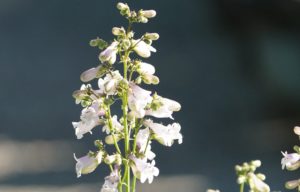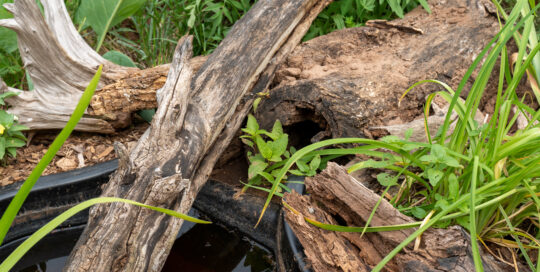Hummingbirds and bumblebees love penstemon
Views: 937

Oh, how I love spring. Penstemon (also known as beardtongue) are among my favor plants blooming now, in mid May. Hummingbirds and bumblebees love penstemon because they put up tall flower spikes with tubular flowers designed to attract them.
A western plant, with cultivars suitable for the east
Penstemon is a large genus with over 200 species, all native to North America. Many grow in the American west, and these do well in sandy or rocky soils. They are suitable for xeriscaping and rock gardens, and, once established, they are quite drought tolerant.
Many cultivars have been developed, and some of these will do quite well in areas that receive more rain, up to 40 inches per year. So penstemon aren’t limited to western gardens.
How to grow penstemon
Most penstemon prefer poor, well-drained soils. Enriched soils and fertilizers such as manure can be problematic for them, resulting in too much growth that ultimately harms the plant.
While some cultivars can tolerate some light shade, most penstemon do best in full sun. Plant them in a sunny spot, and give them lots of space. They don’t like to be overcrowded, especially when they are trying to get established.
Mulching with gravel is probably the best practice for these plants. Wood or cotton-hull mulches can trap moisture against the plant, causing disease.
If you put them in a favorable location, penstemon are low-to-no maintenance plants that you can enjoy without worry.
My experiences with penstemon
I discovered penstemon when I started gardening in extremely sandy soil. I was looking for a plant that could do well with drought, full sun, poor soil, and general neglect. My first plant was a cultivar of a variety long-forgotten, but something that could tolerate a wet spring. It thrived, and I was hooked. Even though they don’t bloom all season, the flower spikes provide interest long after the flowers are gone. Often, I’ll see a hummingbird or goldfinch using one as a perch in summer or fall. And when they are blooming, wow! If people aren’t familiar with them, you can bet they’ll ask what that plant is.
I have started collecting penstemon, and I’ve planted four different ones:
- The original, the name of which I have since lost, with evergreen foliage and pink flowers
- “Dark Towers“
- “Husker Red“
- Red cup-leaf penstemon
“Husker Red” and “Dark Towers” are both stunning plants, with wine-colored foliage and pale flowers. I see many bees on these flowers, so many, in fact, that I think the hummingbirds sometimes go elsewhere. Hummingbirds frequent my original plant.
My red cup-leaf penstemon is gorgeous right now, with pale foliage and scarlet flowers. Oddly, I have not seen a hummingbird on it, yet, but they may not be visiting while I’m watching. I planted it last fall, so my observation time has been limited.
Also, I should mention that I have mulched all my plants with wood mulch. I noticed that my red cup-leaf penstemon has some spots on its base that might be a disease, so I removed the mulch from around it. The other three? They have done fine with wood mulch and better-than-average soil here at my new house. So, I think they are pretty hardy plants that can tolerate some deviation from their ideal. Don’t be afraid to try one that is suitable for your area… and watch the bees and hummingbirds enjoy it in spring.
Meet Leslie Miller
Leslie Ann Miller shares 3.5 acres in rural Oklahoma with birds, butterflies and wide variety of animals. She is currently transforming her yard with plantings…
Leslie's Recent Posts

Creating microclimates and microhabitats to benefit wildlife






